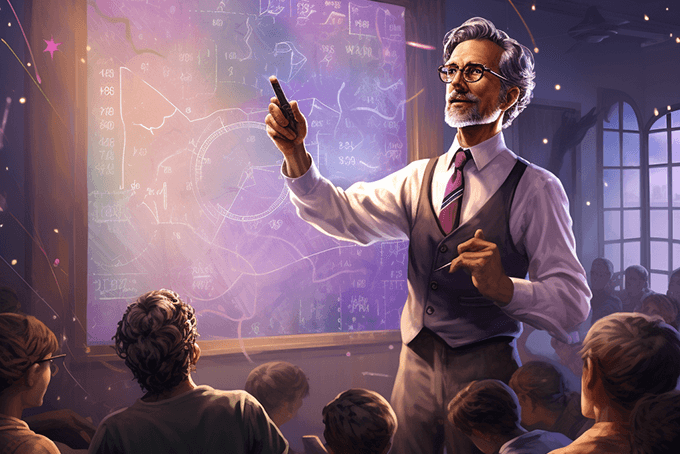Learning to read is a breeze for some kids, but can be challenging for others. The whole process starts with children using descriptive language for story telling and progresses to the ability to comfortably read alone. Working with children throughout these stages supports their development and allows for their own self-learning. Finding fun ways to entice and challenge readers through reading comprehension activities can make the process enjoyable – and encourages kids to enjoy reading for years to come.
Reading Comprehension for Beginning Readers
Young children just getting comfortable sounding out words and starting to read on their own can learn more about story structure by changing the ending of a story read together. Reading with children is the first step to helping their budding reading skills. Kids can explore their new reading abilities by figuring out what happens next in a new story.
- Take a trip to your local library for a couple books the child is not familiar with. This way, when doing the reading comprehension activity, it will be a bit more challenging.
- Discuss with the child that you will be reading the story together but stopping before the end of the story. Explain that it will be her job to come up with an ending for the book. Talking through the process encourages the child’s rational left-brain to get jumpstarted before beginning the reading activity.
- Read the story with the child until there are only a couple pages left asking questions along the way about character and plot development. Making predictions and asking questions while reading encourages interest and active learning.
- Once the end of the story has been reached, close the book and encourage the child to create an appropriate ending on her own. Provide her with paper and crayons to create an illustration along with a pencil to write the text. Younger children may need assistance sounding out and writing words, so offer help as needed.
- Now read the actual ending of the story and compare and contrast it with the ending the child created. How is it similar or different?
Reading Comprehension Activities for Learning Readers
Sequencing a story involves understanding that a book takes the reader down a path with characters, a setting, some sort of activity or a conflict, and a resolution. Once budding readers start understanding parts of a story they learn more about grammar, sentence structure and story construction – encouraging their ability to read.
- Allow the child to select a book she enjoys or a new book from the local library they would like to use for the reading comprehension activity. Read the story with the child or allow her to read it on her own.
- Once she has finished reading, help her to create a chart detailing the four parts of a story, which include the characters, plot or activity, conflict, and resolution.
- She can select parts that had the largest impact on the four parts of story to use for creating a four-cell comic strip. Drawing and writing a comic strip lets her re-create the story in a fun and interesting way.
- Learn more about comic strips and how they are mini-stories by looking at examples. She can check out her local paper or find comic strip examples Online.
- Provide the child with a 9 by 12-inch sheet of drawing paper, pencils, eraser, and ruler to create her four-celled comic strip. She can measure out a long rectangle 12 by 4-inches and then divide the 12-inch length into four 3-inch cells.
- Now she can create her drawings for her cartoon showing the four parts of the story. She can add text using a black felt tipped marker. Once she’s finished drawing and writing, she can use colored pencils to finish her cartoon strip.
- The child can share her finished cartoon with others, seeing if they can figure out what story the cartoon strip is from.
Reading Comprehension Activities for Advanced Readers
Just because a child is able to read chapter books on her own does not mean she is not in need fun and creative ways to actively encourage their brains to continue honing reading comprehension. Although most kids might feign indifference over playing games or creating brainteasers, making a crossword puzzle that might challenge friends and family may entice them to revisit their favorite book.
- Have the child select a book she would like to use as the base for her crossword puzzle. A crossword puzzle uses clues about a topic to help players figure out words to horizontally or vertically fill in a grid.
- Encourage the child to select vocabulary words from the book to use for creating her crossword puzzle. Reading is not just about sounding out words, but includes vocabulary, word recognition, and language concepts. Crossword puzzles are a fun way to encourage active learning and reading comprehension.
- Offer the child a 9 by 12-inch sheet of drawing paper, a pencil, and a ruler. She can begin to create a grid that fits her chosen vocabulary words into an interesting form, linking words together through selected letters.
- Now she can create questions to help others figure out the correct word for the space designated. She can use clues from the book or use descriptive words to encourage players to put the correct word in each position.
- Along with creating an empty puzzle for others to complete, she can create a master puzzle on another sheet of paper with the answers for each of her questions.
- Once her crossword puzzle is complete, she can use a black felt tip marker to outline her pencil grid and then create copies of the finished puzzle for others to fill in.
No matter the age of a child, doing fun reading comprehension activities together is a special way to spend quality time with kids and encourage a future full of the wonders of reading.



